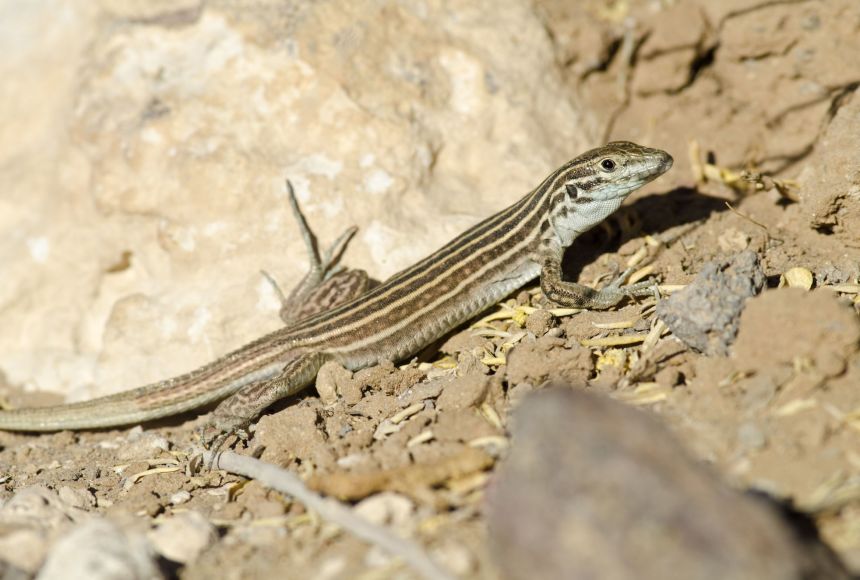ARTICLE
leveledARTICLE
How an Asexual Lizard Procreates Alone
How an Asexual Lizard Procreates Alone
All moms and no dads, the whiptail still comes up with genetically diverse offspring.
Grades
3 - 12
Subjects
Biology, Genetics
Image
N. Mexico Whiptail Lizard
Without females, lizards in the Aspidoscelis genus, like this New Mexico Whiptail (Aspidoscelis neomexicana), reproduce asexually. Unlike other animals that produce this way, however, their DNA changes from generation to generation.
Photograph by Bill Gorum/Alamy Stock Photo

Media Credits
The audio, illustrations, photos, and videos are credited beneath the media asset, except for promotional images, which generally link to another page that contains the media credit. The Rights Holder for media is the person or group credited.
other
Last Updated
November 15, 2024
For information on user permissions, please read our Terms of Service. If you have questions about how to cite anything on our website in your project or classroom presentation, please contact your teacher. They will best know the preferred format. When you reach out to them, you will need the page title, URL, and the date you accessed the resource.
Media
If a media asset is downloadable, a download button appears in the corner of the media viewer. If no button appears, you cannot download or save the media.
Text
Text on this page is printable and can be used according to our Terms of Service.
Interactives
Any interactives on this page can only be played while you are visiting our website. You cannot download interactives.